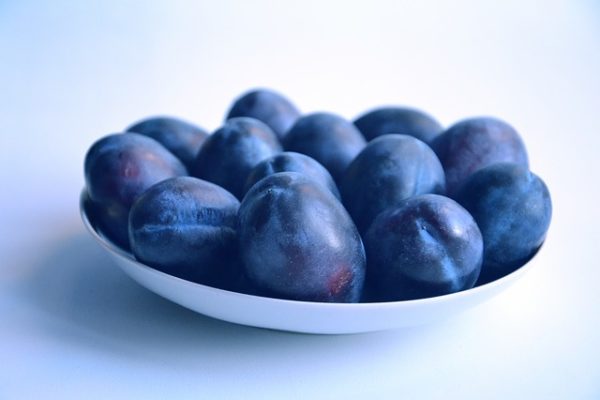 Fruits are a tasty and nutritious snack for humans, but that doesn’t mean that they provide the same health benefits to your canine companions. Before introducing any human food to your dog’s diet, you must first be sure that it will not cause any adverse effects. While dogs can safely consume some fruit, plums are not one of them.
Fruits are a tasty and nutritious snack for humans, but that doesn’t mean that they provide the same health benefits to your canine companions. Before introducing any human food to your dog’s diet, you must first be sure that it will not cause any adverse effects. While dogs can safely consume some fruit, plums are not one of them.
The Risks of Fruit in a Dogs Diet
In all honesty, you should not feed your dog any fruit on a regular basis. Fruits contain an abundance of sugar, and dogs should not have much sugar in their diets. Dogs are much smaller than humans. Therefore, the amount of sugar that they require for normal body functions is much lower. Carbohydrates should provide the sugar that is needed, which breaks down into sugar.
Why Is Sugar Bad for Dogs?
Many of the reasons that too much sugar is bad for dogs are similar to that of humans. Too much sugar in a dog’s diet can cause them to have an upset stomach. This can result in diarrhea, bloody stool, and frequent vomiting (none of which is enjoyable to clean). The bacteria and microorganisms inside of a dog’s gut are not suitable for digesting an abundance of sugar. Too much sugar will upset the balance of those microorganisms.
Too much sugar can also result in unhealthy weight gain for your dog. Obesity in dogs is a severe issue. This will likely lead to heart disease, breathing difficulties, lethargy, and sick joints. You can use fruits as treats from time to time. However, treats should account for less than 10% of a dog’s caloric intake.
Another serious issue that can afflict your dog is diabetes. Your dog can develop Type 2 diabetes much quicker than you can. If this happens, the dog will not be able to process sugar at all. This is because their pancreas will not make enough insulin, which regulates the amount of sugar in the blood.
Why Are Plums Dangerous for Dogs?
Aside from all of the factors listed above, plums are particularly dangerous if consumed by a dog. Plums do provide an abundance of vitamins, but dogs should seek those nutrients elsewhere. While the skin and flesh are not necessarily toxic to dogs, the pit can be extremely problematic.
The pit of a plum contains cyanide. Cyanide is extremely lethal to dogs as well as humans. However, we know not to consume them; a dog does not. If you decide to feed your dog a plum, be sure to remove the pit beforehand.
Cyanide poisoning is acquired when a dog consumes the kernel of the plum. The kernel is deep inside of the pit and is released only in a broken pit. For a dog to get cyanide poisoning, they must either chew on the pit or consume a piece of a crushed pit.
The pit of a plum can also be hazardous for a dog to swallow whole. This can cause choking and significant problems in their digestive tract. This is particularly dangerous for smaller dogs.
What to Do if Your Dog Consumes a Plum?
If your dog accidentally eats a plum, your first step should be to find out what part of the plum your dog consumed. If it is the flesh, it may not be an issue. However, you should call your vet to be certain. If it is the pit, you may have a medical emergency on your hands. Cyanide poisoning can be lethal in a matter of minutes. Pay close attention to your dog to see if they are exhibiting any symptoms of cyanide poisoning. Symptoms for cyanide poisoning are:
- Salivation
- Difficulty Breathing
- Convulsions
- Bright Red Gums
- Paralysis
When the gums turn bright red, it is an indication that the oxygen in their blood will not make it to their cells. This will quickly cause suffocation. If any of these symptoms are present in your dog, take them to the hospital immediately. It is also a good idea to call your vet ahead of time so that they can treatment supplies ready.

Hi, I am Andrew. I am the editor at FamilyWithPets. I am enjoy learning and sharing information about pets that helps enrich the lives of pets and pet parents.
